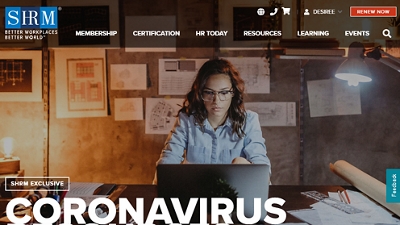Resources
-
Tips and Ideas
- NBF Volunteer Events
- Follow NBF
- Tips for Keeping Your Office Furniture Looking Good & Working Smoothly
- How to Use the Art of Feng Shui to Create a Comfortable & Productive Cubicle
- The Evolution of HON Office Furniture, from the Mad Men-era to Today
- ANSI/BIFMA Testing for Desks
- NBF Opens New Distribution Center in Cleveland
- Health in the Office: The Office Chair as a Medical Device
- The Bestar Connexion Desks
- Why You Should Consider a Standing Desk
- Fun Office Designs
- New Year, New Office Organization
- Do or Don't? Personalizing Your Office or Cubicle
- In Defense of Taking Breaks
- Brand Spotlight: The HON Company
- When Full-Time Employees Have Additional Side Businesses
- How to Know When You're Too Sick to Go to Work
- Solving the Open-Plan Office Conundrum
- How to Use Furniture to Support Your Company Culture
- The Benefits of Faux Leather
- How to Negotiate for a Raise
- Sickness in Collaborative, Open-Plan Offices
- Brand Spotlight: OFM
- Collection Spotlight: The Statesman Collection
- Eco-Friendly Terms and What They Mean
- Brand Spotlight: Martin Furniture
- Tips for Getting Along with Coworkers
- How to Promote Emotional Wellness at Work
- Selecting Seating for Your Healthcare Reception Area
- NBF Presented with I.Q. Award
- How to Create Passionate Employees
- NeoCon: What, Where and When
- The Best of NeoCon 2014
- Trends for Healthcare Spaces at NeoCon 2014
- How to Update Your Outdoor Space
- Brand Spotlight: Trendway
- Collection Spotlight: The At Work Collection by NBF Signature Series
- The Ever-Changing Workplace
- Volunteering in the Workplace
- How to Incorporate Greenery into Your Office Space
- Collection Spotlight: NBF Signature Series Linear Collection
- How to Use NBF Design Services
- Brand Spotlight: By the Yard
- How to Select the Right Color Wood
- Furniture Considerations for Academic Libraries
- Statesman Standing Desks
- Collection Spotlight: The Sauder Via
- The Benefits of Offering Employee Scholarships
- Accessories to Spruce Up Your Office
- How to Stay Focused and on Task
- Collection Spotlight: Physical Therapy Collection from Clinton Industries
- Brand Spotlight: National Office Furniture
- The Benefits of Adjustable Height Desks
- Giving Your Business Curb Appeal
- Office Design Mistakes
- The Benefits of Armless Chairs
- The Benefits of Glass Marker Boards
- The Link Between Workplace Design and Company Identity
- Workplace Wellness: How to Fix Them if They Aren't Working
- Collection Spotlight: NBF Signature Series Contemporary Collection
- It's Time to Stop Hating Our Offices
- How to Dress for an Interview
- Brand Spotlight: LOFTwall
- A Brief History of NBF: 1975-1985
- NBF: Then and Now
- Different Types of Standing Desks
- Why Materials Matter: PVC Free Furniture
- How to Incorporate Artwork into Your Office
- Hoteling the Right Way
- Common Workplace Distractions and How to Avoid Them
- Office Chairs Worth the Splurge
- Healthcare Settings and Wooden Furniture
- A Brief History of NBF: 1985-1995
- How and Why You Should Add a Coffee Bar to Your Workplace
- Our 5 Favorite Virtual Visit Collections
- Meeting Culture: What It Is and How to Improve It
- A Brief History of NBF: 1995 - 2005
- Brand Spotlight: DMI Furniture
- Budget, Commercial, Heirloom: Black Office Collections
- Statement Desks: Our Top Picks
- Employee Benefits: Volunteering
- Collection Spotlight: The Elevation Collection by High Point
- How to Organize Tax Returns
- Top Rated Furniture Solutions
- A Brief History of NBF: 2005-2015
- Budget, Commercial, Heirloom: Traditional Executive Desk
- How to Choose a Filing Cabinet
- NBF Healthcare Furniture Services
- How to Hide and Organize Computer Cords
- Budget, Commercial, Heirloom: Double Bookcases
- Big & Tall Chairs: Our Top Picks
- How We Select Furniture that Works
- 40th Anniversary Celebration at Miller Park
- Introducing New NBF Signature Series Collections
- 2014 NBF Supplier of the Year: National Office Furniture
- Millennials in the Office: How to Adapt to Different Working Methods
- How to Incorporate Your Branding into Your Office Design
- Brand Spotlight - Lesro Industries
- Collection Spotlight: NBF Signature Series Esquire Collection
- Collection Spotlight: NBF Signature Series Specialty Conference Tables
- Collection Spotlight: NBF Signature Series Barista Collection
- Choosing the Right Behavioral Health Furniture
- The Pros and Cons of Standing Meetings
- Collection Spotlight: NBF Signature Series Tabella Collection
- Standing Height Ergonomics
- Healthcare Brand Spotlight: Stance
- How to Get a Standing Desk in Your Office
- 4 Accessories Every Healthcare Facility Needs
- NBF Exclusive Standing Height Solutions
- Seating for Employees Who Stand All Day
- Standing Desks: Simple Desktop Solutions
- Let There Be Light: How We Used Color and Light to Escape a Sea of Beige
- Famous People Who Used Standing Desks
- 5 Lessons Learned From Moving to a New Office
- Now Trending: Tempur-Pedic® Office Chairs
- The Dos and Don'ts of Buying an Office Chair
- Collection Spotlight: NBF Signature Series Array Collection
- Standing Height Solutions for Government Employees
- Where to Splurge and Save on Office Furniture
- 3 Benefits of a Heated Office Chair
- ANSI/BIFMA Testing for Office Chairs
- How to Create a Productive Third Space in Your Office
- Now Trending: Mid-Century Modern Office Furniture
- Fall 2016 Office Decor Forecast
- How to Prevent Office Fires
- Whiteboards: Choosing the Right Dry Erase Board
- How to Decorate with Rustic Décor and Furniture
- 20 Private Offices to Inspire Your Next Makeover
- How to Clean Area Rugs
- How to Prepare for a Medical Emergency in the Office
- Cool, Natural and Warm Tone LED Lighting
- 6 Tips for Keeping Your Office Organized
- 3 Problems the Right Reception Desk Can Solve
- Mid Century Modern Decorating for a Mad Men Inspired Office
- 8 Things to Be Grateful for at Work
- 5 Ways to Show Your Co-Workers You’re Thankful
- 8 Things You Need to Design a Waiting Room That Wows
- How to Set Up a Pediatric Healthcare Facility
- How to Design a Waiting Room That Will Make a Lasting Impression
- How to Set Up a Productive Training Room
- How to Make Guests Feel Welcome in Your Waiting Room
- How to Design a Doctor’s Office Waiting Room
- Collection Spotlight: NBF Signature Series Urban Collection
- The Importance of Patient Centered Design
- Telehealth and the Future of Care
- 2019 NeoCon Trends
- Introduction to Healthcare Furniture and Design
- The "What, When, and How" of Flexible Seating
- Choices, Challenges, and Growth Using Flexible Seating
- Materials for Healthcare Spaces
- Learn More about the Healthier Hospitals Initiative (HHI)
- What Kind of Whiteboard Should I Buy for My Classroom?
- How to Keep Teen and Tween Students Busy During School Breaks
- How to Clean Your School Cafeteria Furniture
- Guide to School Library Furniture
- 3 Benefits to Glass Whiteboards
- The Ultimate Guide to School Desks
- Guide to School Lobby Furniture
- Guide to School Tables
- Guide to School Chairs
- Activity Tables in Every Shape
- All About Fire Proof Files
- 6 November Bulletin Board Ideas
- Guide to Daycare Accessories
- Guide to Lockers
- How to Fight Germs at School
- Cost Effective Design Changes to Fight COVID in Healthcare Spaces
- Easy Improvements for Healthcare Waiting Rooms
- New Trends in Healthcare Design for 2022
- How Should You Welcome New Hires in 2022
- Work From Home Tips
- What to Look for in a Government Furniture Vendor
- Get Government Furniture Purchases Approved: GSA Shopping Tips
- Should You Be Worried About Employees Quiet Quitting?
- Understanding ‘Eco-Friendly’ Furniture Labels
- Understanding Common Green Product Labels in the FTC Green Guides
- Questions to Ask When Starting an Office Design Project
- Guide to Classroom Layouts
- The Navy BPA Program Has Ended: What to Know
- How to Clean Leather Furniture
- Laptop Desk Buying Guide
- Types of File Cabinets
- Desktop Computer Desk Buying Guide
- The Biggest 4-Day Workweek Study Has Reached Its Midpoint, And Reported Data Is Overwhelmingly Positive
- How to Ask Your Employer for a Home Office Stipend
- 12 Pointers for Successfully Negotiating a Commercial Lease
- How to Get Office Furniture Requests Approved: A 3-Step Guide
- What to Know About Millennials in the Office
- How to Find the Perfect L-Shaped Desk
- The Employer’s Guide to Home Office Stipends
- Self-Employed? Save on Taxes With a Home Office Deduction
- The Power of Spaces
- How to Design an Office That Works the Way You Do
- What to Consider for Workstation Planning
- What’s the Point of the Office in 2023?
- How Much Office Space Do You Need? An Easy Guide to Estimating Square Footage
- Should You Finance Your Office Furniture? Pros and Cons
- Designing the Ideal Hot Desking Office: 5 Pointers
- Designing an Office That Helps Introverts and Extroverts Thrive
- 5 Crucial Factors for Developing a Growth Mindset
- Thinking About an Open Office Layout? Consider These 7 Factors First
- Health-Boosting Benefits of Ergonomic Desk Chairs
- Conference Room Planning and Measurement Guide
- What to Know About Gen Z in the Office
- The Ideal Private Office Setup: A 3-Step Guide to Measuring and Planning Your Space
- The Results from the 4 Day Work Week Test Are In—What Businesses Need to Know
- 4 Standing Desk Benefits That Will Inspire You to Replace That Old-School Desk
- 6 Pointers for Better Conference Room Design
- How Office Furniture and Design Affect Productivity
- Waiting Room Design: A Guide to Measurement, Planning, and Furnishing
- The Expert Guide to Patient Room Measurement and Planning
- Return to the Office Essentials—Does Your Team Have the 4 Must-Haves?
- Homey Office Essentials—Discover 2023’s Top Trend
- Inspiring Office Spaces: A Science-Backed Approach to Better Office Design
- Designing a Workplace Lactation Room
- 2023 Reception Trends to Set Your Organization Apart
- 2023 Workstation Trends to Inspire a Return to the Office (RTO)
- 2023 Private Office Trends to Support Productivity
- Office Training Room Design—The No. 1 Rule
- The Importance of Flexible Training Room Furniture
- Maximizing Productivity – The Importance of an Effective Training Room Layout
- 2023 Top Government Furniture Trends
- 6 Key Benefits of Flip-Arm Chairs
- Update These Office Spaces to Drive Business Results
- Best Last-Minute Office Upgrades
- How to Prioritize Office Upgrades on a Budget
- Teachers’ Top 6 Must-Haves for Flex Space Classrooms in 2024
- March 2024 NBF Fresh Picks for Healthcare Spaces
- March 2024 NBF Fresh Picks for Education Spaces
- March 2024 NBF Fresh Picks for Government Spaces
- March 2024 NBF Fresh Picks
- Benefits of a Private Office for Creatives, Salespeople and Tech Workers
- Does Your Workspace Support In-Person Training Programs?
- Case Studies
- Buying Guides
- Press Releases
- Space Planning
- Home
- Resources
- Tips and Ideas
- Trusted Resources for COVID-19
Trusted Resources for COVID-19
Sam Pekarske
5/4/2020
When you're gathering information about COVID-19, make sure you're seeking out vetted resources that come from trusted authorities and agencies. We've compiled a list of the organizations that we have used to aggregate and share our recommendations and policies.
More From NBF
The FAQs of Working Remote During COVID-19
The FAQs of Remote Work During COVID-19
As companies put emergency remote work policies in place and the workforce shifts toward working-from-home, there are often more questions than answers. Here are a few solutions to the most burning questions about transitioning, implementing, and sustaining a successful remote work program.
For Employers
When should we go remote?
Companies should act proactively instead of reactively. Ideally, you want your organization to avoid having any sick employees throughout the pandemic, and the only way to do so is to take swift action. Consider your location, workforce, industry, and capabilities ahead of time, then make an informed decision.
Can I prepare ahead of time?
The most successful work-from-home policies start far before a crisis. If you have the time and resources, begin implementing these steps to make the transition to remote work even easier.
How do I talk to my employees about emergency policy changes?
Remain clear, concise, and calm at all times, relying on hard facts that can be supported by trusted empirical sources. Stay in constant communication as updates emerge, and be receptive to employee questions and concerns.
What if we can't go fully remote?
Take as many precautions as possible and remember that anything worthwhile is still effective, even if it's only partial. Limit air travel, conferences, outside visitors, and even in-office meetings as best as possible. Urge teams to use video and teleconferencing tools.
What about maintenance staff?
Some office staff is essential for maintaining your building. Consider the important roles that administrative staff, groundskeepers, mailroom employees, and other operations positions play; ensure their safety, especially if they need to be on-site.
What can I do to ease the work-from-home transition?
Not every employee has the at-home infrastructure for a successful remote career. Especially in a time where household finances may become tight, consider providing a reimbursement program or stipend for employees to outfit their space. Remain in constant communication to make sure employee needs are met throughout the remote period.
What if somebody has an illness unrelated to COVID-19?
While employee health should always be a primary consideration, now more than ever, all ill employees should be urged to stay home due to any illness, however unrelated to COVID-19 it may be.
What groups are considered high risk?
Age has the largest effect on both mortality and morbidity regarding COVID-19; urge staff over 60 years of age to self-quarantine as soon as possible. From there, encourage pregnant employees, those with chronic illnesses, and other immunocompromised individuals to work from home.
What information can I trust?
Stick to large-scale, largely empirical resources that don’t make assumptions or become overzealous with their data. Several trusted resources, including the CDC, WHO, and SHRM, can be found here.
Are there any legal considerations?
Certainly. Follow federal and state rules and regulations regarding private health information, mandatory sick pay, FMLA (which does not cover the common flu; however it can possibly cover a longer-term chronic respiratory illness), and all ADA guidelines. Consult your legal team or a corporate lawyer for the most accurate information.
For Employees
How can I protect myself against COVID-19?
Begin with the same precautions you'd use during any other flu season. Practice excellent hand hygiene (wash with soap and water more often than usual and supplement with hand sanitizer), cough into your elbow, and thoroughly sterilize surfaces in public areas.
Should I wear a mask to work or out of the house?
CDC recommendations are constantly being updated to reflect the current situation. At this time of updating, it is recommended that a face covering be worn in areas of high community spread, such as grocery stores, public transit, or other group environments.
What do I need to bring home to work remotely?
Printed materials often become lost in the shuffle, no matter where you are. Don't forget the notepads, binders, files, and catalogs you use occasionally. Bring home your peripherals, such as a wireless mouse or keyboard, to prevent fatigue from working day in and day out on a laptop. And, of course, don't forget your charger.
Where should I set up my at-home workspace?
There are endless schools of thought throughout the interior design community, but none suit every situation. Setting up a home office will depend on the size of your space, where you have an area for a desk and storage, and what furniture you need to do your best work.










0 Comments